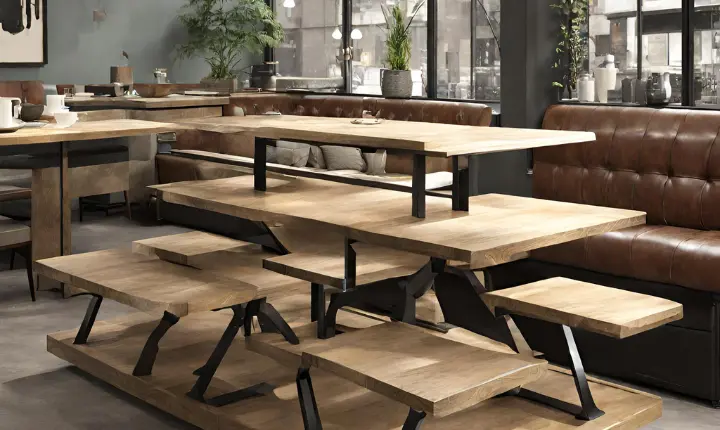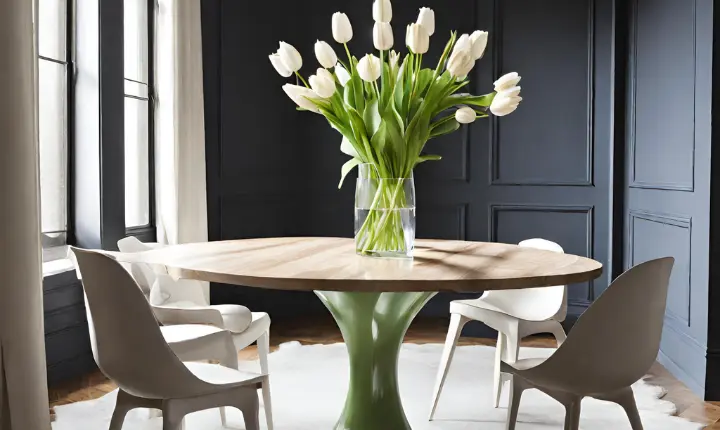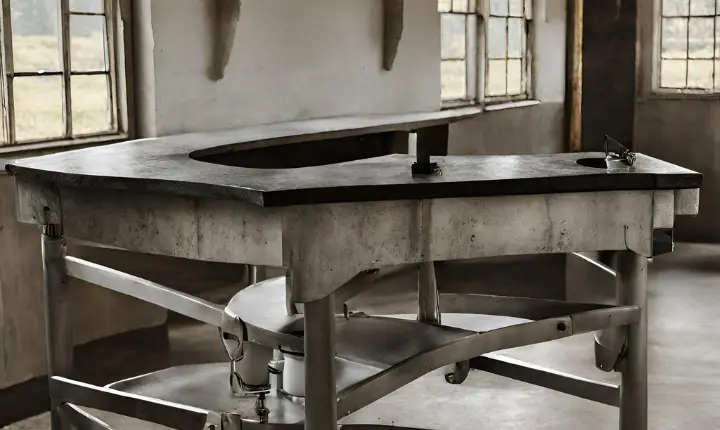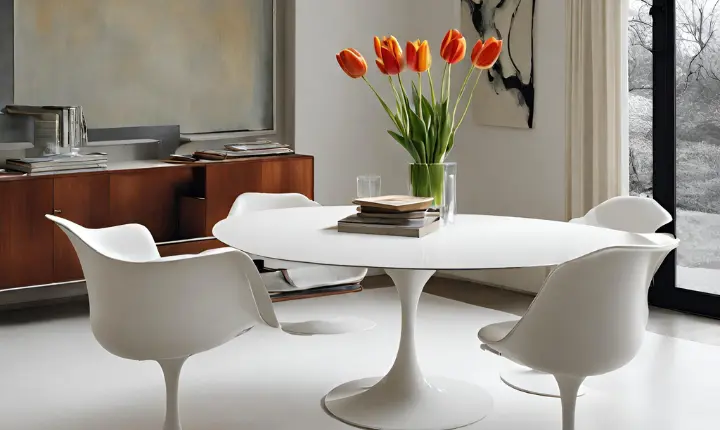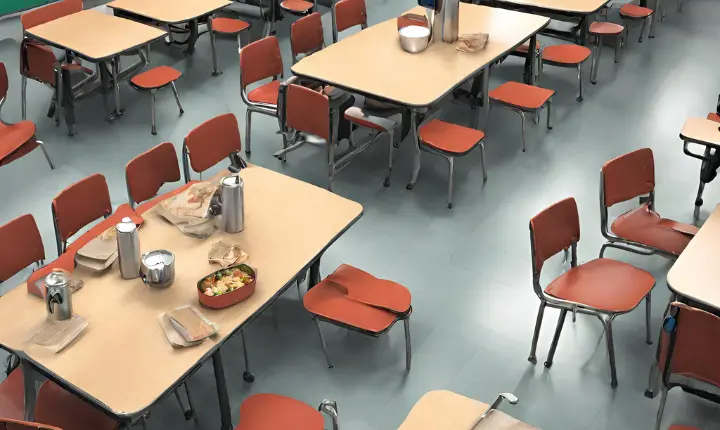Coffee Shop Table Size
The coffee shop table is a crucial element in the aesthetics and functionality of a coffee shop. The size of a table can have a significant impact on the comfort and atmosphere of a cafe, even though it may seem like an ordinary piece of furniture. This guide will explore the nuances of coffee shop tables, their…
The coffee shop table is a crucial element in the aesthetics and functionality of a coffee shop. The size of a table can have a significant impact on the comfort and atmosphere of a cafe, even though it may seem like an ordinary piece of furniture. This guide will explore the nuances of coffee shop tables, their importance, what to consider, and how to answer common questions.
The Impact of Coffee Shop Table Size
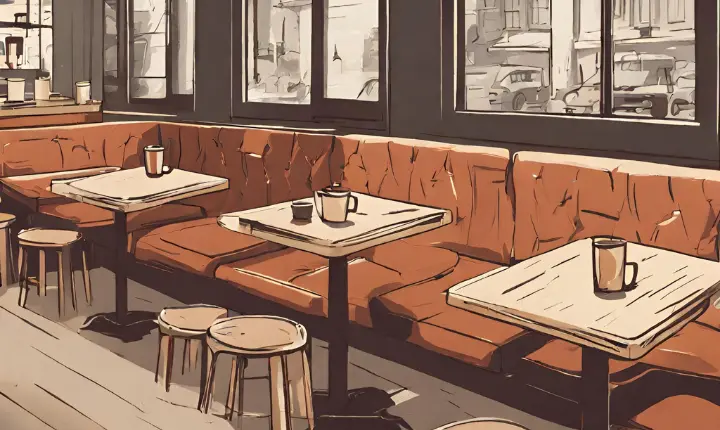
Coffee shop table size is not just a matter of aesthetics; it directly influences the dynamics of customer interactions, space utilization, and overall customer satisfaction. Let’s break down the key aspects of how table size can make a difference:
Social Interaction
Coffee shops are often considered communal spaces where people gather for various purposes – catching up with friends, working on projects, or simply enjoying a moment of solitude. The size of the tables plays a crucial role in facilitating these interactions. Larger tables encourage group gatherings, while smaller ones cater to individual patrons. Striking the right balance can create a harmonious social atmosphere.
Space Utilization
Coffee shops, especially in urban areas, often face space constraints. Optimal table sizing is essential for maximizing seating capacity without compromising on comfort. Well-spaced tables prevent overcrowding, allowing customers to navigate the space easily.
Comfort and Ambiance
Finding the sweet spot between cozy and spacious is essential for creating a comfortable ambiance. Tables that are too small can feel cramped, while oversized ones may result in a disconnected atmosphere. The right table size contributes to a balanced and inviting environment, encouraging customers to linger and enjoy their coffee.
Factors to Consider When Choosing Coffee Shop Table Size
Now that we understand the impact, let’s delve into the factors that coffee shop owners and designers should consider when selecting the size of their tables:
Available Space
The physical dimensions of your coffee shop are the starting point for determining table size. Measure the available floor space and consider the layout to understand how tables can be strategically placed to optimize both capacity and flow.
Customer Base
Understanding your target customer base is crucial. Are you catering to solo professionals looking for a quiet workspace, or are you aiming to attract groups of friends for social gatherings? Tailoring your table sizes to your audience ensures that your space meets the specific needs of your customers.
Flexibility
Opt for a mix of table sizes to offer versatility. Having a combination of small, intimate tables and larger communal ones allows you to cater to various customer preferences and group sizes. This flexibility ensures that your coffee shop can adapt to different scenarios throughout the day.
Functionality
Consider the functionality of the tables. Are they primarily for dining, casual meetings, or laptop use? Adjustable tables or those with additional features like built-in power outlets can enhance the functionality of your space, making it more appealing to a diverse clientele.
FAQs
Q: What is the ideal distance between tables for a comfortable seating arrangement?
A: The ideal distance between tables depends on the available space and the type of seating arrangement. In general, aim for at least 24-30 inches between tables to allow customers to move comfortably and create a sense of privacy.
Q: Should all tables in a coffee shop be the same size?
A: While having consistency in table size can provide a cohesive look, it’s advisable to mix different table sizes for versatility. This allows you to cater to a diverse range of customers and accommodate various activities within your coffee shop.
Q: How can I optimize table size for laptop users?
A: For customers who use laptops, consider incorporating tables with sufficient surface area and possibly built-in power outlets. Additionally, provides comfortable seating options that cater to extended periods of work.
Q: What role do round tables play in coffee shop design?
A: Round tables encourage a sense of inclusivity and are ideal for small group gatherings. They also facilitate better conversation flow compared to rectangular tables. Integrate round tables strategically to enhance the social aspect of your coffee shop.
Conclusion
From social dynamics to space utilization, finding the right coffee shop table size involves a careful balance of factors. By considering the available space, target customer base, flexibility, functionality, and aesthetics, coffee shop owners can create an environment that not only looks inviting but also caters to the diverse needs of their patrons. So, the next time you’re sipping your favorite brew in a coffee shop, take a moment to appreciate the thought that went into crafting the perfect table size for your enjoyment.
